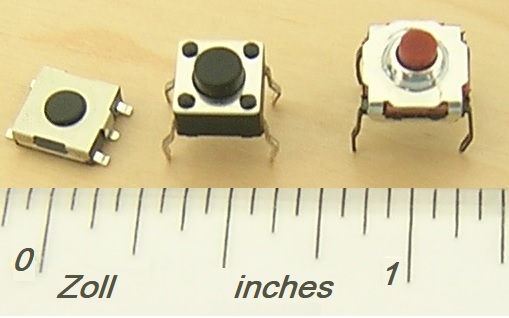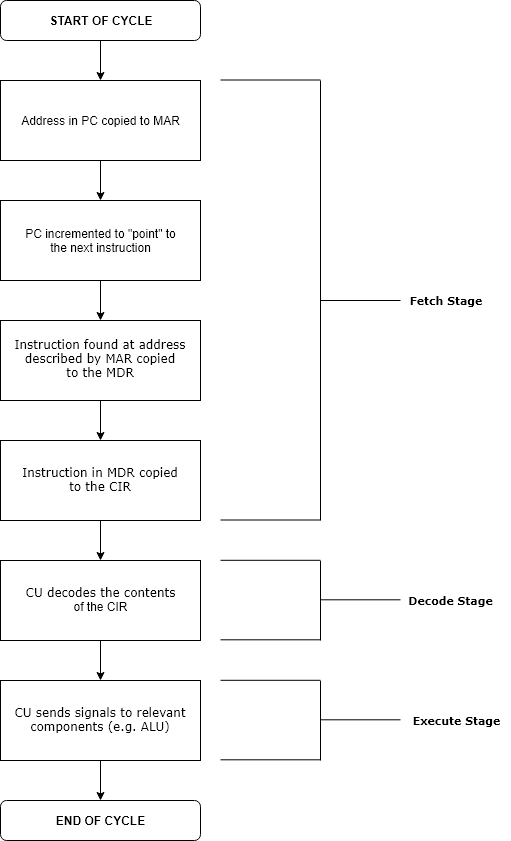|
Nanoelectromechanical Relay
A nanoelectromechanical (NEM) relay is an electrically actuated switch that is built on the nanometer scale using semiconductor fabrication techniques. They are designed to operate in replacement of, or in conjunction with, traditional semiconductor logic. While the mechanical nature of NEM relays makes them switch much slower than solid-state relays, they have many advantageous properties, such as zero current leakage and low power consumption, which make them potentially useful in next generation computing. A typical NEM relay requires a potential on the order of the tens of volts in order to "pull in" and have contact resistances on the order of gigaohms. Coating contact surfaces with platinum can reduce achievable contact resistance to as low as 3 kΩ. Compared to transistors, NEM relays switch relatively slowly, on the order of nanoseconds. Operation A NEM relay can be fabricated in two, three, or four terminal configurations. A three terminal relay is composed of a so ... [...More Info...] [...Related Items...] OR: [Wikipedia] [Google] [Baidu] |
Switch
In electrical engineering, a switch is an electrical component that can disconnect or connect the conducting path in an electrical circuit, interrupting the electric current or diverting it from one conductor to another. The most common type of switch is an electromechanical device consisting of one or more sets of movable electrical contacts connected to external circuits. When a pair of contacts is touching current can pass between them, while when the contacts are separated no current can flow. Switches are made in many different configurations; they may have multiple sets of contacts controlled by the same knob or actuator, and the contacts may operate simultaneously, sequentially, or alternately. A switch may be operated manually, for example, a light switch or a keyboard button, or may function as a sensing element to sense the position of a machine part, liquid level, pressure, or temperature, such as a thermostat. Many specialized forms exist, such as the toggle swit ... [...More Info...] [...Related Items...] OR: [Wikipedia] [Google] [Baidu] |
Static Random-access Memory
Static random-access memory (static RAM or SRAM) is a type of random-access memory (RAM) that uses latching circuitry (flip-flop) to store each bit. SRAM is volatile memory; data is lost when power is removed. The ''static'' qualifier differentiates SRAM from ''dynamic'' random-access memory (DRAM): * SRAM will hold its data permanently in the presence of power, while data in DRAM decays in seconds and thus must be periodically refreshed. * SRAM is faster than DRAM but it is more expensive in terms of silicon area and cost. * Typically, SRAM is used for the cache and internal registers of a CPU while DRAM is used for a computer's main memory. History Semiconductor bipolar SRAM was invented in 1963 by Robert Norman at Fairchild Semiconductor. Metal–oxide–semiconductor SRAM (MOS-SRAM) was invented in 1964 by John Schmidt at Fairchild Semiconductor. The first device was a 64-bit MOS p-channel SRAM. SRAM was the main driver behind any new CMOS-based technology fab ... [...More Info...] [...Related Items...] OR: [Wikipedia] [Google] [Baidu] |
Automotive Electronics
Automotive electronics are electronic systems used in vehicles, including engine management, ignition, radio, carputers, telematics, in-car entertainment systems, and others. Ignition, engine and transmission electronics are also found in trucks, motorcycles, off-road vehicles, and other internal combustion powered machinery such as forklifts, tractors and excavators. Related elements for control of relevant electrical systems are also found on hybrid vehicles and electric cars. Electronic systems have become an increasingly large component of the cost of an automobile, from only around 1% of its value in 1950 to around 30% in 2010. Modern electric cars rely on power electronics for the main propulsion motor control, as well as managing the battery system. Future autonomous cars will rely on powerful computer systems, an array of sensors, networking, and satellite navigation, all of which will require electronics. History The earliest electronic systems available as fa ... [...More Info...] [...Related Items...] OR: [Wikipedia] [Google] [Baidu] |
Instruction Cycle
The instruction cycle (also known as the fetch–decode–execute cycle, or simply the fetch–execute cycle) is the cycle that the central processing unit (CPU) follows from boot-up until the computer has shut down in order to process instructions. It is composed of three main stages: the fetch stage, the decode stage, and the execute stage. In simpler CPUs, the instruction cycle is executed sequentially, each instruction being processed before the next one is started. In most modern CPUs, the instruction cycles are instead executed concurrently, and often in parallel, through an instruction pipeline: the next instruction starts being processed before the previous instruction has finished, which is possible because the cycle is broken up into separate steps. Role of components Program counter The program counter (PC) is a register that holds the memory address of the next instruction to be executed. After each instruction copy to the memory address register (MAR), the PC can ... [...More Info...] [...Related Items...] OR: [Wikipedia] [Google] [Baidu] |
Integrated Circuit
An integrated circuit (IC), also known as a microchip or simply chip, is a set of electronic circuits, consisting of various electronic components (such as transistors, resistors, and capacitors) and their interconnections. These components are etched onto a small, flat piece ("chip") of semiconductor material, usually silicon. Integrated circuits are used in a wide range of electronic devices, including computers, smartphones, and televisions, to perform various functions such as processing and storing information. They have greatly impacted the field of electronics by enabling device miniaturization and enhanced functionality. Integrated circuits are orders of magnitude smaller, faster, and less expensive than those constructed of discrete components, allowing a large transistor count. The IC's mass production capability, reliability, and building-block approach to integrated circuit design have ensured the rapid adoption of standardized ICs in place of designs using discre ... [...More Info...] [...Related Items...] OR: [Wikipedia] [Google] [Baidu] |
Mechanical Computer
A mechanical computer is a computer built from mechanical components such as levers and gears rather than electronic components. The most common examples are adding machines and mechanical counters, which use the turning of gears to increment output displays. More complex examples could carry out multiplication and division—Friden used a moving head which paused at each column—and even differential analysis. One model, the Ascota 170 accounting machine sold in the 1960s, calculated square roots. Mechanical computers reached their zenith during World War II, when they formed the basis of complex bombsights including the Norden, as well as the similar devices for ship computations such as the US Torpedo Data Computer or British Admiralty Fire Control Table. Noteworthy are mechanical flight instruments for early spacecraft, which provided their computed output not in the form of digits, but through the displacements of indicator surfaces. From Yuri Gagarin's first s ... [...More Info...] [...Related Items...] OR: [Wikipedia] [Google] [Baidu] |
Radio Frequency
Radio frequency (RF) is the oscillation rate of an alternating electric current or voltage or of a magnetic, electric or electromagnetic field or mechanical system in the frequency range from around to around . This is roughly between the upper limit of audio frequencies that humans can hear (though these are not electromagnetic) and the lower limit of infrared frequencies, and also encompasses the microwave range. These are the frequencies at which energy from an oscillating current can radiate off a conductor into space as radio waves, so they are used in radio technology, among other uses. Different sources specify different upper and lower bounds for the frequency range. Electric current Electric currents that oscillate at radio frequencies (RF currents) have special properties not shared by direct current or lower audio frequency alternating current, such as the 50 or 60 Hz current used in electrical power distribution. * Energy from RF currents in conduct ... [...More Info...] [...Related Items...] OR: [Wikipedia] [Google] [Baidu] |
Electroplating
Electroplating, also known as electrochemical deposition or electrodeposition, is a process for producing a metal coating on a solid substrate through the redox, reduction of cations of that metal by means of a direct current, direct electric current. The part to be coated acts as the cathode (negative electrode) of an electrolytic cell; the electrolyte is a solution (chemistry), solution of a salt (chemistry), salt whose cation is the metal to be coated, and the anode (positive electrode) is usually either a block of that metal, or of some inert electrical conductor, conductive material. The current is provided by an external power supply. Electroplating is widely used in industry and decorative arts to improve the surface qualities of objects—such as resistance to abrasion (mechanical), abrasion and corrosion, lubrication, lubricity, reflectivity, electrical conductivity, or appearance. It is used to build up thickness on undersized or worn-out parts and to manufacture metal ... [...More Info...] [...Related Items...] OR: [Wikipedia] [Google] [Baidu] |
Bulk Micromachining
Bulk can refer to: Industry * Bulk cargo * Bulk carrier * Bulk liquids * Bulk mail * Bulk material handling * Bulk pack, packaged bulk materials/products * Bulk purchasing * Baking * Bulk fermentation, the period after mixing when dough is left alone to ferment in bulk, meaning before division to final weights. Physics *Bulk density *Bulk modulus *In brane cosmology and M-theory (see also the AdS/CFT correspondence), the bulk is a hypothetical higher-dimensional space within which the eleven dimensions of our universe (the three dimensions we can see, plus time, plus the seven extra dimensions that we can't see but M-theory theorizes are all around us) may exist. People *Mike Waters, known as Bulk, British professional wrestler with the UK Pitbulls *The Bulk, the main character of The Amazing Bulk Fiction *Bulk and Skull Farkas "Bulk" Bulkmeier and Eugene "Skull" Skullovitch are fictional characters in the ''Power Rangers'' universe. They appeared as permanent cast ... [...More Info...] [...Related Items...] OR: [Wikipedia] [Google] [Baidu] |
Inverter (logic Gate)
In digital logic, an inverter or NOT gate is a logic gate which implements logical negation. It outputs a bit opposite of the bit that is put into it. The bits are typically implemented as two differing voltage levels. Description The NOT gate outputs a zero when given a one, and a one when given a zero. Hence, it inverts its inputs. Colloquially, this inversion of bits is called "flipping" bits. As with all binary logic gates, other pairs of symbols such as true and false, or high and low may be used in lieu of one and zero. It is equivalent to the logical negation operator (¬) in mathematical logic. Because it has only one input, it is a unary operation and has the simplest type of truth table. It is also called the complement gate because it produces the ones' complement of a binary number, swapping 0s and 1s. The NOT gate is one of three basic logic gates from which any Boolean circuit may be built up. Together with the AND gate and the OR gate, any function in binary ... [...More Info...] [...Related Items...] OR: [Wikipedia] [Google] [Baidu] |
CMOS
Complementary metal–oxide–semiconductor (CMOS, pronounced "sea-moss ", , ) is a type of MOSFET, metal–oxide–semiconductor field-effect transistor (MOSFET) semiconductor device fabrication, fabrication process that uses complementary and symmetrical pairs of p-type semiconductor, p-type and n-type semiconductor, n-type MOSFETs for logic functions. CMOS technology is used for constructing integrated circuit (IC) chips, including microprocessors, microcontrollers, memory chips (including Nonvolatile BIOS memory, CMOS BIOS), and other digital logic circuits. CMOS technology is also used for analog circuits such as image sensors (CMOS sensors), data conversion, data converters, RF circuits (RF CMOS), and highly integrated transceivers for many types of communication. In 1948, Bardeen and Brattain patented an insulated-gate transistor (IGFET) with an inversion layer. Bardeen's concept forms the basis of CMOS technology today. The CMOS process was presented by Fairchild Semico ... [...More Info...] [...Related Items...] OR: [Wikipedia] [Google] [Baidu] |
Back End Of Line
Back end of the line or back end of line (BEOL) is a process in semiconductor device fabrication that consists of depositing metal interconnect layers onto a wafer already patterned with devices. It is the second part of IC fabrication, after front end of line (FEOL). In BEOL, the individual devices (transistors, capacitors, resistors, etc.) are connected to each other according to how the metal wiring is deposited. Metalization The individual devices are connected by alternately stacking oxide layers (for insulation purposes) and metal layers (for the interconnect tracks). The vias between layers and the interconnects on the individual layers are thus formed using a structuring process. Common metals are copper and aluminum. BEOL generally begins when the first layer of metal is deposited on the wafer. BEOL includes contacts, insulating layers (dielectrics), metal levels, and bonding sites for chip-to-package connections. For modern IC processes, more than 10 metal layers ... [...More Info...] [...Related Items...] OR: [Wikipedia] [Google] [Baidu] |






